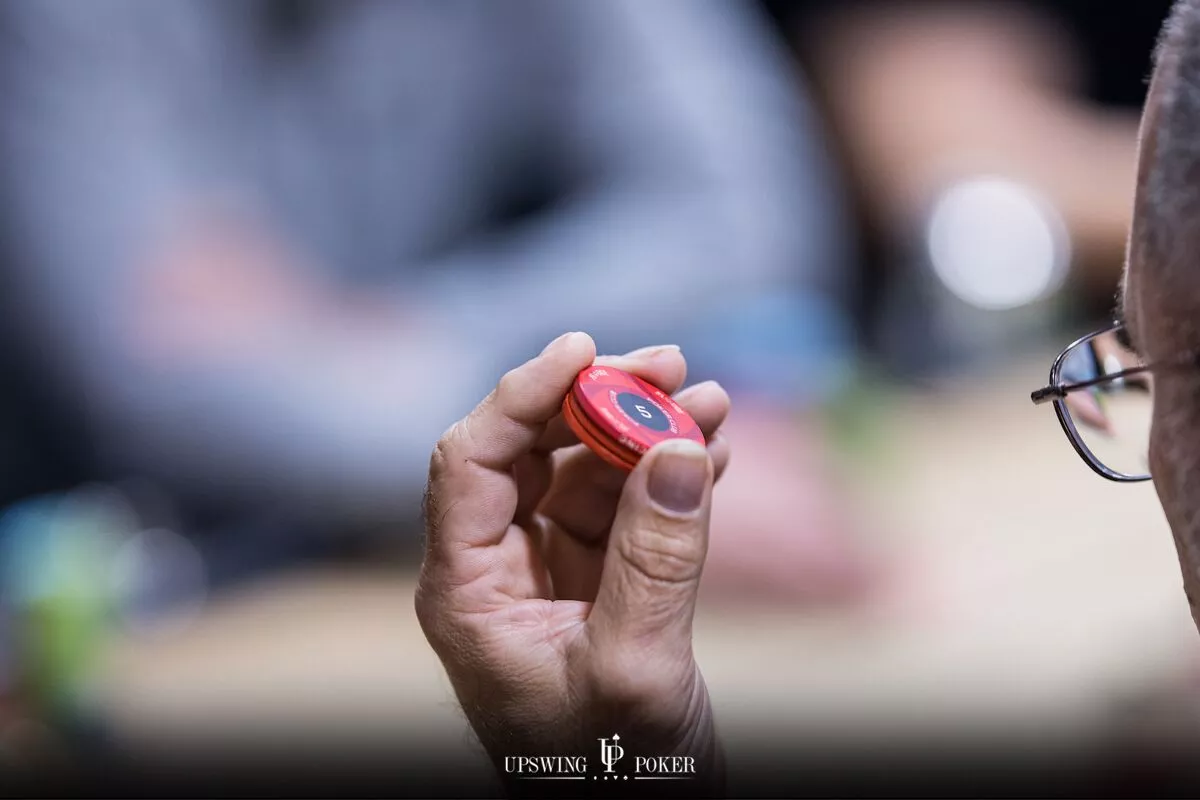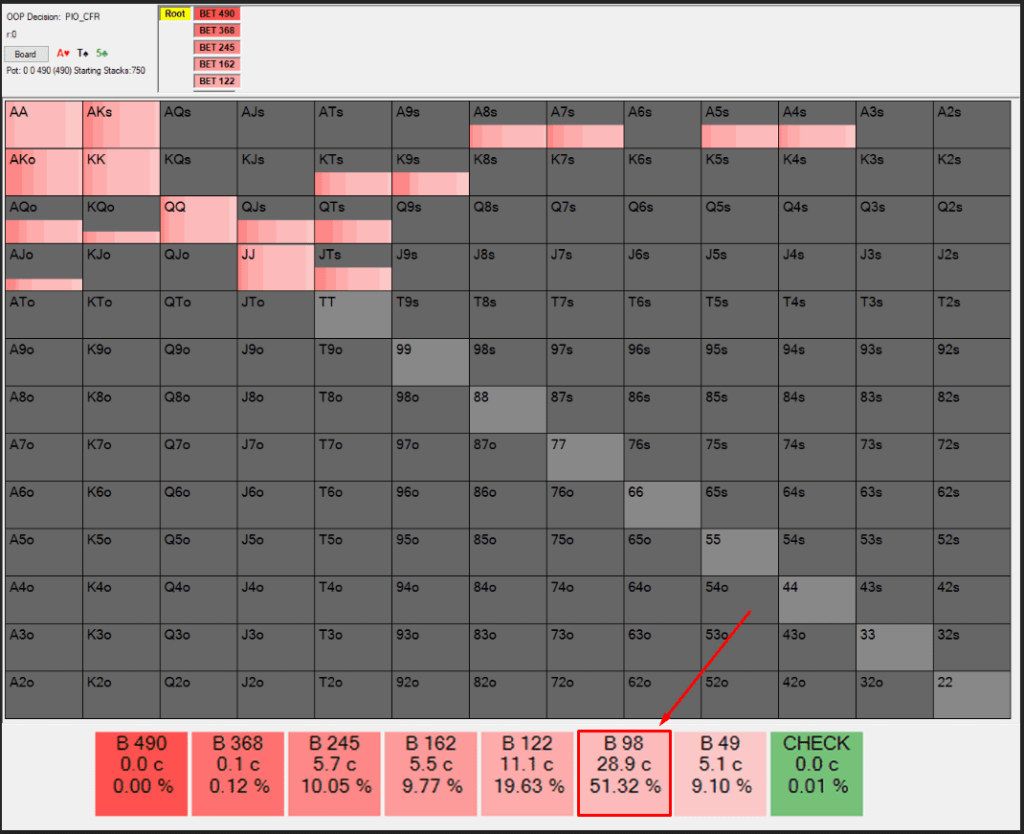
The best poker players in the world have a seemingly unlimited amount of weapons in their arsenal.
One of those weapons is the tiny bet size (about 10-20% of the pot).
When used in the right situations, tiny bets can be an incredibly efficient way to deny equity, leverage your range advantage, and narrow your opponent’s range.
In this article, I am going to show you 3 situations in which you should start using tiny bet sizes to increase your win-rate.
4-bet pots are very unique to other situations in poker. Because of the low stack-to-pot ratio (SPR), the optimal bet size is usually around 25-33% pot.
However, you should actually use an even smaller c-bet size on Ace-high boards.
Because your 4-bet range will include Pocket Aces, Ace-King, and some Ace-Queen, you have a massive range advantage over your opponent. At the same time, you won’t have very many potentially bluffing hands in your range.
At equilibrium, this means that you cannot bet big because there aren’t enough bluffs to balance out your value range. If you did bet big, your opponent could easily counter you by folding very often, even with pretty decent hands. In other words, you make their life very easy. Small bets, on the other hand, make their life hard.
Let’s take a look at an example with the aid of a solver.
Suppose you raise from the Cutoff and the Button 3-bets. You 4-bet after the action folds back to you and the Button calls. The flop comes A♥ T♠ 5♣.
I gave the solver 7 different bet sizing options for this spot to see which one it used most frequently. Take a look:

Similar to 4-bet pots, the driving reasons for using tiny bet sizes in 3-bet pots on Ace-high boards are:
Imagine you 3-bet from the Small Blind against a Middle Position open, and that Middle Position player calls. The flop comes A♦ J♦ 8♣.
Your range is so strong on this board that you will be practically gasping for bluffs. As a result, the best approach is an aggressive one.
Donk-betting is when you lead from out of position into the aggressor from the previous street. In many cases, donk-betting is (accurately) seen as a fishy play (hence the name).
That being said, there are a few scenarios in which donk-betting is actually the proper strategy to use.
Those scenarios follow a pretty clear pattern: when the board runs out in such a way that the caller picks up a nut advantage, he should start donk-betting. Usually that bet should be quite small.
Let’s take a look at an example.
Suppose the Button opens and you defend from the Big Blind. The board comes A♣ K♥ 9♦. The Button c-bets 75% of the pot and you check-call. The turn brings a second King, the K♦.
In this spot, you will find yourself holding trips quite often, even more often than your opponent. This is because you will always check-call your Kx hands on the flop, but the Button will usually check back (or at least bet smaller) with his Kx hands.
If you always check and never donk-bet, here, the Button will always have the option to check back. This allows him to realize equity with a ton of marginal hands and draws while betting with a polarized range. This can hurt you in two ways:
His large bet sizing will deny the equity of your draws.
When he checks and you have trips, you miss the opportunity to build the pot.